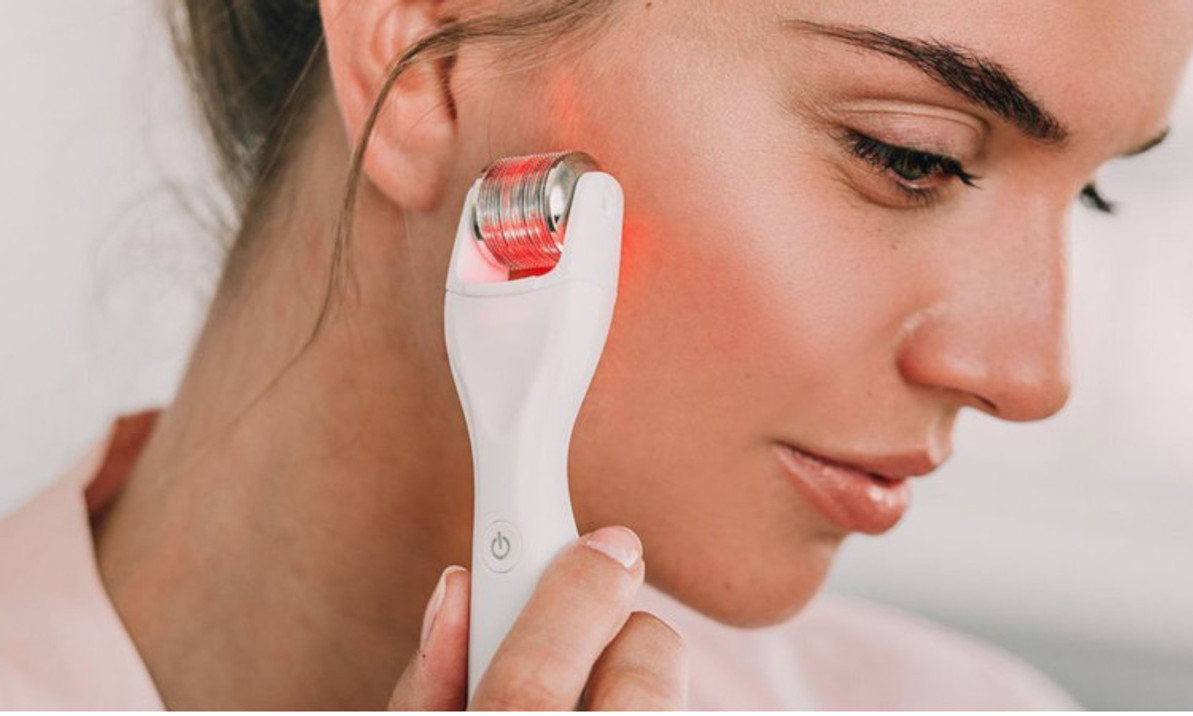The question on many skincare enthusiasts’ minds is, can you use niacinamide and hyaluronic acid together? These two powerful ingredients have carved out their places in the beauty industry. Both are known for their unique benefits, but their compatibility raises questions for those seeking to optimize their skincare routines. This article will dive deep into each ingredient, the science behind them, and how they can work harmoniously to promote healthier, more radiant skin.
Table of Contents
ToggleUnderstanding Niacinamide

Niacinamide, also referred to as nicotinamide, is a form of vitamin B3 that has garnered significant attention in the realm of skincare. It’s celebrated not only for its versatility but also for its impressive range of benefits when it comes to improving skin health.
What is Niacinamide?

Niacinamide is a water-soluble vitamin that plays a crucial role in cellular metabolism. It is found naturally in the body but is also derived from various food sources such as meat, fish, eggs, green vegetables, and cereals. In skincare products, niacinamide is commonly used as a stable and effective ingredient due to its ability to penetrate the skin barrier.
When applied topically, niacinamide works wonders by helping to regulate oil production, minimizing pores, and enhancing the skin’s barrier function. It also aids in reducing redness and blotchiness, making it an excellent option for individuals with sensitive or reactive skin types.
Benefits of Niacinamide for the Skin

The advantages of incorporating niacinamide into your skincare routine are numerous.
Firstly, niacinamide is renowned for its ability to improve the appearance of enlarged pores. It helps to control sebum production, which can lead to less visible pores over time.
Secondly, this powerful ingredient helps in fading hyperpigmentation and dark spots. By inhibiting the transfer of melanin to the skin cells, niacinamide brightens the complexion and offers a more uniform skin tone.
Additionally, it boasts anti-inflammatory properties, which can help soothe conditions like acne and rosacea. The calming effect of niacinamide can also be beneficial for those with eczema-prone skin.
Finally, niacinamide is an antioxidant powerhouse. It protects the skin from oxidative stress caused by environmental aggressors, thus contributing to an overall youthful appearance.
Common Uses in Skincare Products

Niacinamide can be found in a variety of skincare formulations, including serums, moisturizers, and creams. It’s often included in formulations aimed at addressing specific concerns such as acne, aging, and uneven skin tone.
You’ll find niacinamide not just in high-end brands, but across a wide spectrum of price points, making it accessible for everyone. Its lightweight texture allows it to be layered easily with other products, making it a versatile favorite among skincare enthusiasts.
Understanding Hyaluronic Acid

Hyaluronic acid is another leading ingredient that has taken the skincare world by storm. Known for its hydrating properties, HA serves a different but equally essential purpose compared to niacinamide.
What is Hyaluronic Acid?
Hyaluronic acid is a naturally occurring substance in the human body, predominantly found in connective tissues, skin, and cartilage. It holds moisture and aids in retaining hydration within the skin. Given its capacity to hold up to 1,000 times its weight in water, HA is hailed as a super hydrator.
In skincare formulations, hyaluronic acid is usually presented in several molecular weights, each providing different levels of hydration. Smaller molecules can penetrate deeper into the skin, while larger molecules offer surface hydration.
Benefits of Hyaluronic Acid for the Skin
The primary benefit of hyaluronic acid is its astonishing ability to retain moisture. When included in skincare products, HA can help maintain hydration levels, keeping the skin plump and supple.
Moreover, the presence of hyaluronic acid can noticeably reduce the appearance of fine lines and wrinkles. By drawing moisture to the skin’s surface, it encourages a smoother and more youthful complexion.
Additionally, hyaluronic acid assists in aiding skin repair and regeneration. It helps to support the skin’s natural barrier, which ensures it remains resilient against external factors and potential irritants.
How Hyaluronic Acid Works in Skincare
In terms of application, hyaluronic acid can be particularly beneficial when used after cleansing and before applying heavier creams or oils. When applied on damp skin, HA can attract and lock in moisture, maximizing hydration benefits.
Furthermore, HA can be combined with other ingredients. For instance, it complements actives like retinol or vitamin C, enhancing their absorption while providing an added layer of hydration.
Despite its fantastic benefits, it’s crucial to note that using hyaluronic acid without any additional humectants or occlusives may lead to dehydration if the surrounding environment lacks moisture. Thus, proper incorporation into a skincare regimen is vital.
The Science Behind Niacinamide and Hyaluronic Acid

Understanding how niacinamide and hyaluronic acid interact at a molecular level provides valuable insights into their effectiveness when used together. The combination appears to enhance the benefits of each ingredient, resulting in synergistic effects on the skin.
How They Interact at the Molecular Level
Research indicates that niacinamide and hyaluronic acid can work well together due to their differing modes of action. While niacinamide addresses issues like inflammation, pigmentation, and pore size, hyaluronic acid focuses purely on hydration.
When layered correctly, niacinamide can enhance the penetration of hyaluronic acid into the skin, promoting better hydration while simultaneously controlling oil production and redness. This complementary action can lead to improved skin texture and overall appearance.
Potential Synergistic Effects on the Skin
The synergistic relationship between these two ingredients extends beyond hydration and oil regulation. By combining niacinamide’s ability to strengthen the skin barrier with hyaluronic acid’s moisture-binding qualities, users might notice a marked improvement in skin resilience.
Furthermore, research suggests that using both ingredients concurrently can target signs of aging, such as loss of elasticity and uneven skin tone. Users have reported fewer breakouts, diminished fine lines, and a more even complexion, further highlighting the advantages of this dynamic duo.
From a practical perspective, incorporating both into a daily routine can streamline skincare regimens without needing multiple products. By utilizing the benefits of both niacinamide and hyaluronic acid, users can achieve comprehensive skincare solutions efficiently.
Compatibility of Niacinamide and Hyaluronic Acid

Now that we’ve explored the individual benefits and scientific interactions of niacinamide and hyaluronic acid, it’s essential to assess their compatibility in skincare routines. Many people wonder whether their skin can safely handle these ingredients together without adverse effects.
Research Studies Supporting Their Use Together
Numerous studies have been conducted to evaluate the safety and efficacy of combining niacinamide and hyaluronic acid. These studies indicate that the two ingredients do not conflict; instead, they work collaboratively to provide enhanced results.
For example, some clinical trials have shown that the application of niacinamide can improve skin barrier function, allowing for better moisture retention. When paired with hyaluronic acid, the increased hydration can lead to improved outcomes for individuals with dry or compromised skin.
Moreover, research has demonstrated that products containing both ingredients resulted in decreased transepidermal water loss, meaning that the skin retains more moisture and stays hydrated longer.
Expert Opinions on Combining These Ingredients
Skincare experts frequently endorse the combination of niacinamide and hyaluronic acid as a safe and effective strategy for achieving healthy skin. Dermatologists often recommend both products for patients with various skin concerns, ranging from acne to signs of aging.
Experts highlight that using niacinamide alongside hyaluronic acid offers a holistic approach to skincare. This combination not only addresses immediate hydration needs but also tackles underlying issues such as inflammation, pigmentation, and enlarged pores. Consequently, many skincare professionals advocate incorporating both into a daily regimen for optimal results.
Best Practices for Using Niacinamide and Hyaluronic Acid

To reap the maximum benefits of both niacinamide and hyaluronic acid, it’s essential to understand best practices for their application. Following these guidelines can significantly enhance their effectiveness while ensuring your skin remains healthy and radiant.
Application Order: What to Apply First
When incorporating niacinamide and hyaluronic acid into your skincare routine, the order of application matters. Generally, it is advisable to start with lighter, water-based serums before moving on to thicker products.
Begin by cleansing your face and applying a toner if desired. Then, apply a hyaluronic acid serum, ideally on damp skin, to maximize hydration benefits. Following this, allow the hyaluronic acid to absorb fully before layering niacinamide on top. This order will ensure that the HA pulls moisture into the skin while niacinamide works on regulating oil production and enhancing overall skin quality.
Recommended Concentrations for Maximum Efficacy
Both niacinamide and hyaluronic acid come in varying concentrations, and finding the right balance is key. For niacinamide, products with a concentration ranging from 5% to 10% are typically recommended for most skin types. Higher concentrations may be beneficial for specific concerns, though they could cause irritation for sensitive skin.
As for hyaluronic acid, look for serums containing lower molecular weights for deeper hydration. A concentration of around 1% to 2% HA is generally safe and effective for daily use.
It’s best to start with lower concentrations, especially if you have sensitive skin, and gradually increase based on your skin’s tolerance and needs.
How to Incorporate into Your Existing Routine
Integrating niacinamide and hyaluronic acid into your current skincare routine doesn’t have to be complicated. Begin by identifying existing products that may contain similar ingredients or duplicative functions.
Instead of overwhelming your skin with too many active ingredients, consider simplifying your regimen. Gradually replace or supplement your current products with those containing niacinamide and hyaluronic acid.
For optimal results, use these two ingredients consistently, applying them both in the morning and evening. By establishing a routine, your skin can adapt and thrive under the influence of these excellent ingredients.
Potential Side Effects and Considerations of Niacinamide and Hyaluronic Acid

While niacinamide and hyaluronic acid are considered safe for most individuals, understanding potential side effects and considerations is crucial for effective usage. Awareness can help prevent irritation and make informed choices about incorporating these ingredients into your skincare routine.
Possible Reactions and Sensitivities
Although rare, some individuals may experience irritation or sensitivity when using niacinamide. This may manifest as redness, stinging, or burning, particularly in individuals with very sensitive skin or certain medical conditions.
It’s always wise to perform a patch test before introducing new products into your routine. If irritation occurs, discontinue use immediately and consult a dermatologist if necessary.
Conversely, hyaluronic acid is generally well-tolerated and poses minimal risks. However, if used in excessively dry environments without additional moisturizing agents, users may experience paradoxical dryness. Proper layering and hydration techniques can alleviate this issue.
Who Should Avoid This Combination?
While most skin types can benefit from the combination of niacinamide and hyaluronic acid, some individuals may need to exercise caution. Those with extremely sensitive skin may want to avoid higher concentrations of niacinamide initially until they determine their tolerance.
Additionally, individuals with specific skin concerns, such as rosacea, should consult with a healthcare professional before adding new ingredients to their routine. Customization is key to achieving the best results, and professional guidance can ensure a tailored approach.
Tips for Maximizing Benefits of Niacinamide and Hyaluronic Acid

To get the most out of your skincare routine centered around niacinamide and hyaluronic acid, employing specific strategies can amplify their positive impact on your skin.
Layering Techniques for Enhanced Absorption
Layering products correctly can enhance absorption and effectiveness. As mentioned previously, apply hyaluronic acid first on damp skin to trap moisture, followed by niacinamide. To further boost absorption, consider lightly misting your face with water or a hydrating toner before applying your serums.
Additionally, gentle patting motions during application can help products absorb into the skin better. Massaging the product into your skin can stimulate circulation, promoting a more vibrant appearance.
Pairing with Other Skincare Ingredients
While niacinamide and hyaluronic acid are stellar on their own, they can also complement other ingredients in your routine. For instance, pairing niacinamide with retinol can yield impressive anti-aging results, as retinol accelerates cell turnover while niacinamide calms and soothes the skin.
Additionally, consider layering these ingredients with antioxidants like vitamin C. When applied correctly, this combination can offer robust protection against environmental stressors and lead to a brighter complexion.
However, be cautious not to overload your skin with too many active ingredients at once. Balance is essential to avoid irritation while maximizing benefits.
Conclusion
So, can you use niacinamide and hyaluronic acid together? The answer is a resounding yes! Not only can they coexist harmoniously, but they also create a powerhouse duo that can tackle a multitude of skin concerns. From hydration to oil regulation and everything in between, both ingredients bring something unique to the table.
By understanding their individual benefits, recognizing their compatibility, and following best practices for application, you can harness the full potential of niacinamide and hyaluronic acid. Whether you’re battling dryness, uneven skin tone, or signs of aging, incorporating these two ingredients into your skincare routine can yield remarkable results, transforming your skin into a more luminous and youthful version of itself.
Contact us via other platforms if you have any questions or requests that need to be answered quickly.
Tiktok: www.tiktok.com/@lunabeautyacademy6
Hotline: 034 254 0228
Email: lunabeautyacademy@gmail.com
Address: No. 29, Alley 140/1/2, Lane 140 Nguyen Xien, Thanh Xuan, Hanoi
Luna wishes you success and hopes you will have the best experiences at the academy. If you need advice or answers about anything, please leave your Contact Information With Us, the Luna team will contact you soon. Thank you for reading this article.


















